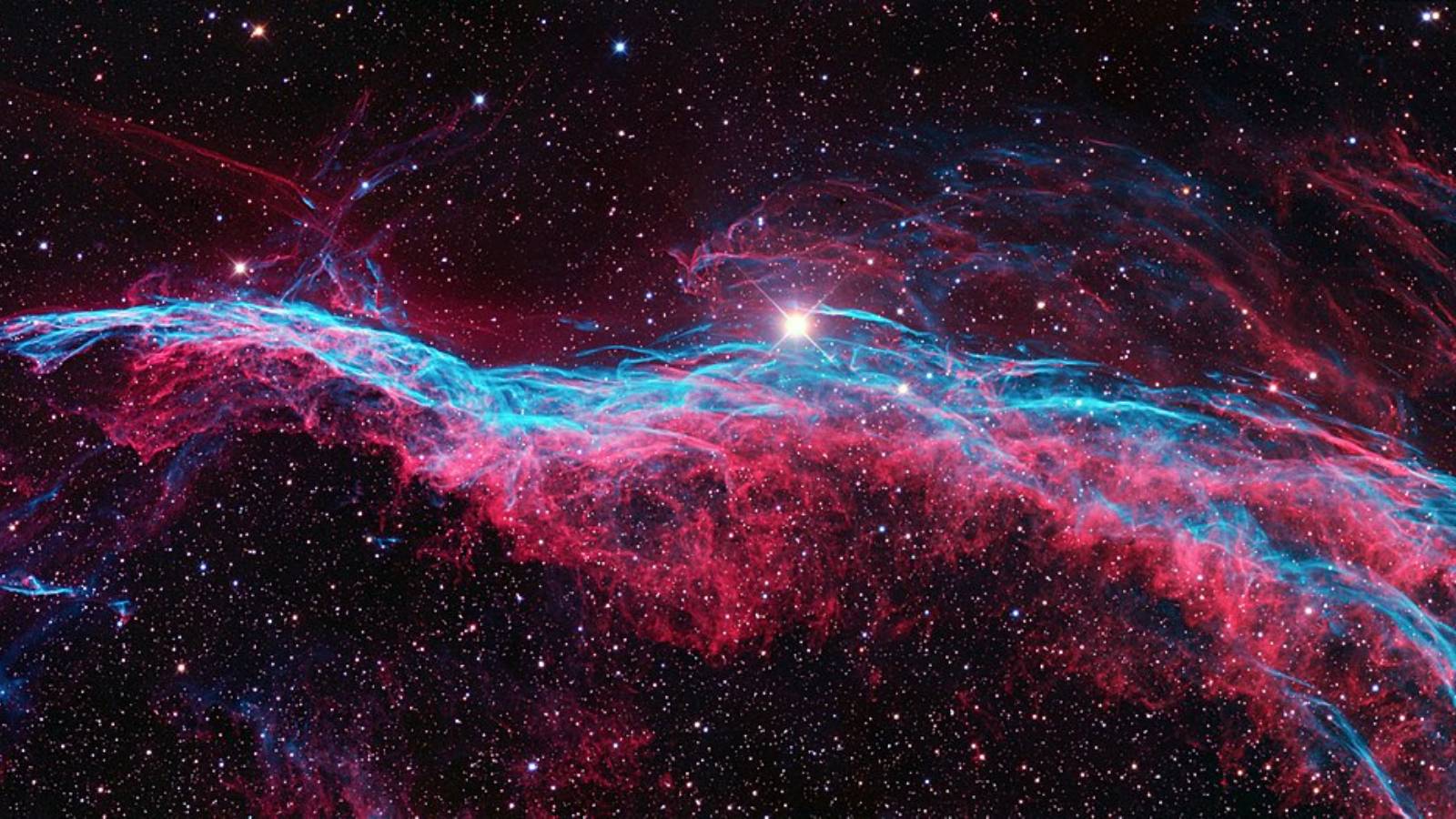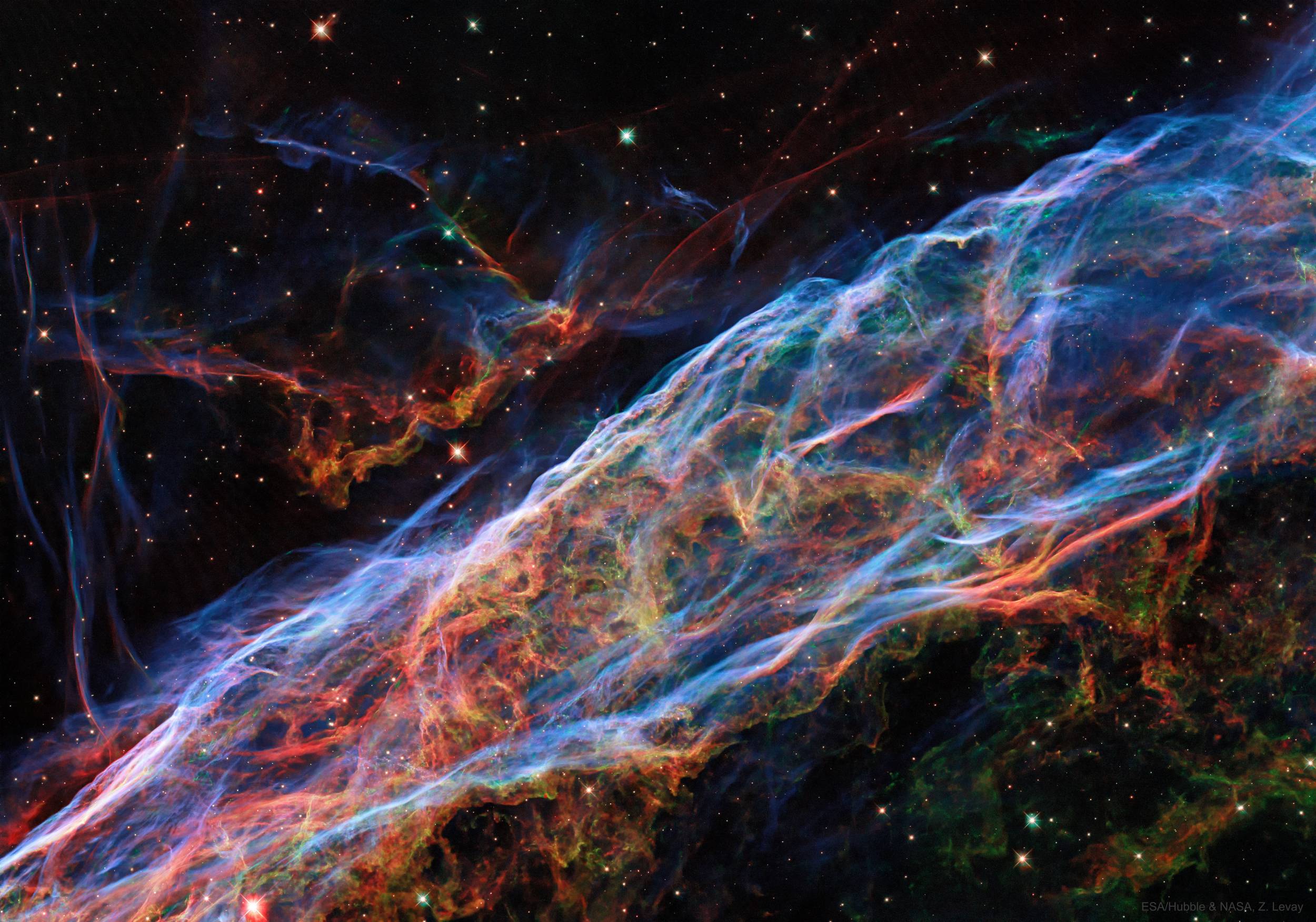Daca ati fost vreodata curiosi sa vedeti cum arata ramasitele unei stele care a explodat, ei bine in imaginea de mai jos, publicata de catre NASA, puteti vedea ceea ce este vizibil in Veil Nebula. Cei de la NASA spun ca acestea ar fi ramasitele unei stele care ar fi explodat cu 7000 de ani in urma, si puteti vedea cat de complex este ceea ce ramane in urma unui asemenea tip de eveniment care are in univers, dar asta nu e tocmai un lucru greu de crezut.
NASA a monitorizat cu foarte mare atentie Veil Nebula, iar imaginea pe care ne-o dezvaluie acum are menirea de a ne arata ca dupa explozia unei stele raman totusi urme pentru perioade foarte lungi de timp. In cazul acesta vorbim despre 7000 de ani care au trecut din momentul in care acea stea a explodat, conform NASA, si e foarte posibil ca ramasitele sa ramana vizibile pentru o perioada chiar mai lunga de atat in respectiva zona din Calea Lactee.
NASA: Imaginea Uimitoare cu Ramasitele unei Stele care a Explodat
NASA spune ca steaua care a explodat, adica s-a transformat intr-o supernova, a lasat ramasite care erau vizibile mult mai luminoase decat sunt in momentul de fata pentru pamanteni. In decursul celor 7000 de ani ramasitele si-au pierdut din luminozitate, astfel ca acum pot fi vazute doar printr-un telescop care trebuie sa fie indreptat in respectiva zona din Veil Nebula, adica exact ceea ce a facut NASA pentru a ne prezenta aceasta imagine.
“Ramasite de acest fel sunt toate cele care rămân vizibile pentru o stea din Calea Lactee. Acum aproximativ 7.000 de ani, acea stea a explodat într-o supernovă care a părăsit Nebuloasa Vălului. La acea vreme, norul în expansiune era probabil la fel de strălucitor ca o semilună, rămânând vizibil săptămâni întregi pentru oamenii care trăiau în zorii istoriei înregistrate. Astăzi, rămășița de supernova rezultată, cunoscută și sub numele de Cygnus Loop, s-a estompat și este acum vizibilă doar printr-un mic telescop îndreptat spre constelația Lebedei (Cygnus). Nebuloasa rămasă a Vălului este totuși imensă din punct de vedere fizic și, chiar dacă se află la aproximativ 1.400 de ani lumină distanță, acoperă de peste cinci ori dimensiunea Lunii pline. Imaginea prezentată este un mozaic al telescopului spațial Hubble format din șase imagini care acoperă o durată de doar aproximativ doi ani lumină, o mică parte a rămășiței supernovei expansive. În imagini ale Nebuloasei complete a voalului.”
NASA monitorizeaza intregul univers in mod constant, iar imaginile de acest gen ne prezinta o parte pe care foarte multi dintre noi nu o stim, si nici nu avem cum sa o percepem intr-un alt mod. Desigur ca este nevoie de un proces indelungat de monitorizare pentru ca NASA sa poata surprinde imagini incredibile de acest gen, dar si cand ni le prezinta, vedem cat de multe se ascund in continuare in univers in momentul de fata.
NASA prezinta in mod constant imagini de acest gen pentru intreaga omenire, iar ele ne ajuta sa intelegem mult mai bine ceea ce se ascunde in intregul univers.























